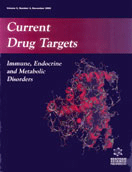Abstract
Tissue transglutaminase (tTGase, tTG) is known as being implicated in the intracellular cross-linking of proteins occurring in a growing series of physiological conditions including - just to mention the most relevant ones- programmed cell death (apoptosis), cell adhesion, growth, spreading and differentiation, tumor growth, metastasis, cell adhesion, proliferation, differentiation, extra cellular matrix (ECM) stabilization. In the current work we investigated tTG activity and expression of “normal” and potential transformed cytosolic tTG antigens in mammalian cells. Most cell lines studied showed low tTG activity, which in all cases could be enhanced considerably by treating cell cytosol homogenates with trypsin. The results suggested the existence -in transformed cells- of inactive types of tTGase. We purified cytosolic tTG antigens from these cells utilizing a GTP-agarose resin, and we can therefore conclude that “normal” molecular weight (mw) tTG antigens, but also high molecular weight (hmw) and low molecular weight (lmw) tTG antigens from transformed cells, retain GTP-binding ability. The initial results from our study also allowed us to hypothesize that transformed hmw- and lmw- tTG antigens should not be considered as the result of post-translational modifications of normal mw, cytosolic tTG. The potentially low or absent transamidating functionality of cytosolic tTG species in transformed mammalian cells could be responsible for decreased or even abolished programmed cell death, whereas the unaffected GTP-binding functionality of such proteins in these cells might lead to increased signal transduction and possibly proliferation.
 1
1


















